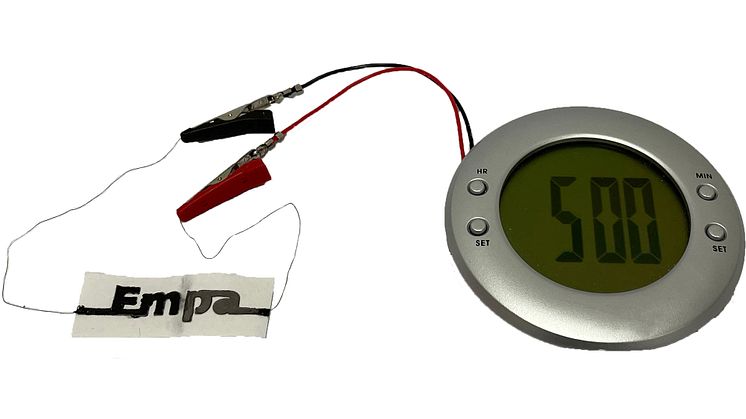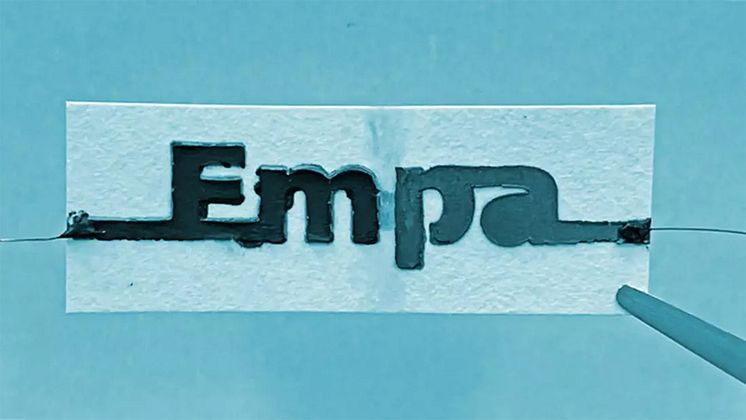
Press release -
The paper battery that makes electronic products environmentally friendly
Ditch your regular AA batteries. Now you can power simple electronic products - in principle - with a plain paper battery. Researchers from Empa in Switzerland have developed an environmentally friendly paper battery that produces electricity only when water is added.
Smart labels to track parcels, different types of environmental sensors or why not a moisture detector? Whatever the application, the paper battery from Empa (Swiss Federal Laboratories for Materials Science and Technology) has one major advantage over traditional batteries - it is biodegradable.
- Waste from electronic products is a major problem. Most of the time, these are simple and cheap products with small batteries where there is little economic incentive to recycle. We therefore have several research projects at Empa where we are trying to make this type of application possible without burdening the environment," says Gustav Nyström, Head of the Cellulose & Wood Materials research lab at Empa.
Responsible electronics is the solution
But what materials can be used that do not have an adverse effect on the environment? And that don't need to be recycled but can easily be broken down by nature? Gustav Nyström and his research team asked themselves these very questions, and the answer turned out to be ordinary paper, using the biodegradable substances graphite and zinc, among others.
- In order to develop electronics that do not affect the environment, we need both new materials and new ideas. Recycling doesn't work in all parts of the world, therefore so-called responsible electronics are necessary. This can mean products that can be recycled or, if recycling is not profitable, products that are broken down by nature," he says.
Possibility to integrate into products
Now, of course, the paper battery doesn't just work with a piece of paper and some water. First, the paper is dipped in salt water and, once dry, a coating of graphite flake is added to one side and zinc powder to the other - the battery's two poles.
Then, when water is added, the salt dissolves and causes the zinc to release electrons that can power a simple electronic product as they travel between the two poles.
- We're already talking to a couple of different companies that could integrate the battery into their products. I believe more in integrating this kind of technology into a product for a specific use than selling it separately. One possibility would be to integrate sensors into packaging to test if the product passes certain criteria and whether it needs to be isolated. Those sensors could be powered by the paper battery," says Gustav Nyström.
The unique paper battery from Empa - among a host of other innovations - can be seen at Subcontractor InnoDex during Elmia Subcontractor, 15-17 November.
Subcontractor InnoDex is the arena for all of industry's product developers, engineers and designers - a knowledge and inspiration arena like no other, with exhibitions and lectures on new materials, innovative technologies and creative processes. This year, Subcontractor InnoDex has four focus areas:
- Materials for Green Energy
- Circular Materials for Future Mobility and Design
- Additive High-Tech Applications
- Smart and Digital Materials


